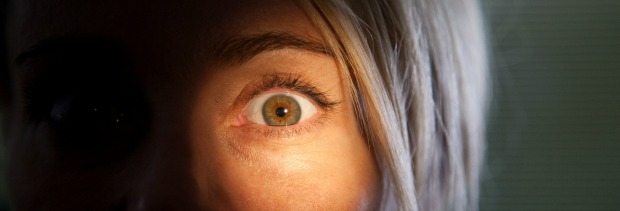Julia’s Eyes
If the thought of eyeballs coming into contact with any dangerous substance, blade or needle fills you with abject horror, then this film is definitely not for you.
Plot summary
A woman suffering from degenerative sight disease, finds her twin sister, who has already gone blind as a result of the same disease, hanged in the basement of her house. In spite of the fact that everything points to suicide, she decides to investigate and enters a dark world that seems to hide a mysterious presence.

When Salvador Dali and director Luis Buñuel teamed up to create short film Un Chien Andalo they included the now-infamous eyeball-slitting scene, a wince-inducing moment. Since that surrealist moment in 1929, the threat eyeball of torture has been used on-screen make us cringe and squirm in varying ways. Films like Day of the Triffids and Blindness remind us how vulnerable the human body is, and present the horrific implications of a world without sight.
The latest production from Guillem del Toro adds itself to this disparate canon of ‘films about sight’. In Julia’s Eyes, the eyes really do have it. If the thought of eyeballs coming into contact with any dangerous substance, blade or needle fills you with abject horror, then this film is definitely not for you. Sadists, welcome.
Julia (Belén Rueda) is devastated when her blind twin sister Sara (also Rueda) is found dead. All signs point towards suicide, but Julia suspects foul play. Her husband Issac (Lluís Homar) is worried by her growing obsession with discovering the truth, especially as it brings on anxiety attacks that threaten her own sight. As Julia plunges deeper into the murky depths surrounding her sister’s death, her sight gets progressively worse and she must rely on nurse Iván to help her navigate an increasingly sightless world.
Julia’s Eyes is atmospheric, often obscuring the audience’s view, and relies on the unseen to create tension. Unfortunately this gimmick is used relentlessly throughout the film and instead of reminding us how frustrating and frightening it is to be in the dark, becomes grating. The multiple sequences of Julia frantically feeling around while an unknown assailant quietly watches were done much better in The Silence of the Lambs when Clarice is plunged into the darkness of Buffalo Bill’s lair. A scene in which said assailant attempts to find Julia in a dark room using the flashbulb of a camera is directly lifted from The Texas Chainsaw Massacre.
The film’s premise plays around with some interesting ideas and has a couple of good scares, but ultimately falls into silliness and has the most ridiculous ending – a definite ‘I can’t believe they did that’ moment. Julia’s Eyes will do well from the association with del Toro, but his subtle blend of horror and fantasy is notable in its absence. Horror fans won’t be impressed by hackneyed rehashing of films that worked better the first time around.











COMMENTS